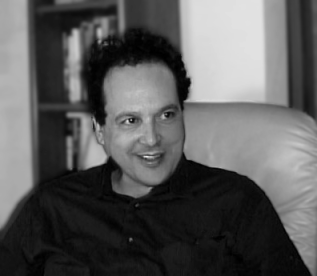
Anatole Katok
In dynamical systems, as in any other wide area of mathematics, very few have a comprehensive view of the field and an understanding of the interaction of its parts as well as its connections to other fields. Anatole Katok belongs to this very select group. His contributions to the theory are multifaceted and have shaped large areas within dynamical systems in many ways.
Anatole Katok received his PhD in 1968. His thesis advisor was Ya. Sinai, the thesis referees were A. Kolmogorov and V. Rokhlin. By the time he completed his dissertation, Katok was recognized as a prominent mathematician who deserved a position either at the Moscow State University or at the Steklov Mathematical Institute, but that was impossible due to the political atmosphere and anti-Semitism of the Soviet society at that time. He obtained, however, a position in the department of mathematical methods at the Central Economics and Mathematics Institute. At this time, Anosov and Katok started a joint seminar on dynamical systems at the Steklov Mathematical Institute at which Anosov held a position. Katok's position did not allow him to have students in mathematics and therefore he supervised several participants of the seminar informally. The guidance and support provided by the seminar and its altruistic leaders became their graduate school and were crucial for their mathematical lives.
In 1978 Katok emigrated to the US, bringing along his unlimited mathematical enthusiasm, optimism and energy. At each of the three universities where Katok has held tenured faculty positions, the University of Maryland, Caltech and Penn State, he was a natural leader of the dynamical systems group. The Maryland and Penn State groups have become leading world centers and have successfully interacted with each other.
Already in his doctoral dissertation, Katok (together with A. Stepin) developed a theory of periodic approximations of measure-preserving transformations commonly known as Katok—Stepin approximations. This theory helped to solve some longstanding problems that went back to von Neumann and Kolmogorov, and won the prize of the Moscow Mathematical Society in 1967.
His next major achievement was the theory of monotone (or Kakutani) equivalence, which is based on a far-reaching generalization of the concept of time-change in flows.
There are many constructions in the theory of dynamical systems that are due to Katok and reveal interesting and often surprising phenomena. Among these are the Anosov—Katok construction of smooth ergodic area-preserving diffeomorphisms of compact manifolds, the construction of Bernoulli diffeomorphisms with nonzero Lyapunov exponents on any surface, and the first construction of an invariant foliation for which Fubini's Theorem fails in the worst possible way (Fubini foiled).
Katok is also well-known for formulating challenging conjectures and problems (for some of which he even offered prizes) that stimulated and influenced significant bodies of work in dynamical systems. The best-known of these is the Katok Entropy Conjecture, which connects important geometric and dynamical properties of geodesic flows.
The classical theory of dynamical systems deals with actions of the groups Z of integers or R of real numbers. Recently, dynamical methods have found other applications to physics and some areas in mathematics that requires dynamical systems with ``more general time''—the actions of large groups.
The Katok Entropy Conjecture is one of the first rigidity statements in dynamical systems. In the last two decades Katok has been working intensely on other rigidity phenomena. In collaboration with several colleagues, he made fundamental contributions to smooth rigidity and geometric rigidity, to differential and cohomological rigidity of smooth actions of higher-rank abelian groups and of lattices in Lie groups of higher rank, to measure rigidity for group actions and to nonuniformly hyperbolic actions of higher-rank abelian groups.
Katok's work on topological properties of nonuniformly hyperbolic dynamical systems is among his best-known and widely quoted results. It includes density of periodic points and lower bounds on their number as well as exhaustion of topological entropy by horseshoes. These were the topic of his lecture at the International Congress of Mathematicians in 1983 as well as the 1982 Rufus Bowen Memorial Lectures at Berkeley.
Tolya Katok is a close friend and a faculty member of the Independent University of Moscow. He has made an enthusiastic contribution to the life of the IUM by giving very intensive crash courses in dynamical systems three years in a row, 2001, 02, 03.
He was the organizer, together with A. Bolibrukh, of a memorial conference dedicated to V. M. Alexeev at the Steklov Institute, December 2002.
In 1996, together with Svetlana Katok and A. Kushnirenko, Anatole organized the MASS program: one semester mathematical studies at Penn State in Russian style for students from different universities of the United States. Today, three programs of this kind are active: Budapest semesters, MASS and MIM (Math in Moscow).
Tolya is eager to share the treasures of his knowledge with the people around him. He teaches from the age of 16. In different periods, he has addressed schoolchildren, undergraduate and graduate students, young and mature researchers. We wish Tolya to continue his creative and teaching activity with the same heat and fire as he has done for the last 44 years.
M. Brin, B. Hasselblat, Yu. Ilyashenko, A. Kushnirenko,
Ya. Pesin, A. Sossinski, M. Tsfasman

